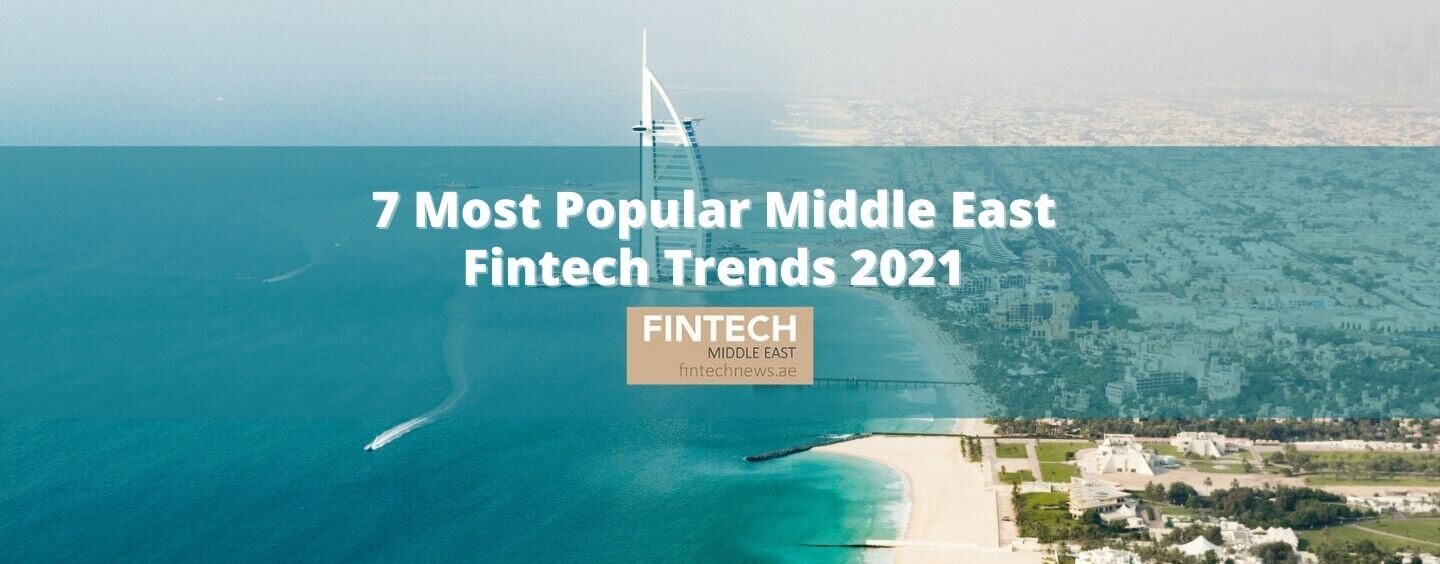The Middle East fintech sector is undergoing a period of incredible transformation. From fintech funding upsurges, to rising fintech adoption, growing financial inclusion and a growing number of homegrown startups, Middle East fintech is evolving rapidly and in many directions.
This largely has to do with policy-level support and regulatory nudges, especially in the UAE, Bahrain and Saudi Arabia. The wider GCC region is pushing for economic diversification and an ever so slight shift to a more open economy than before. In this context, technology has asserted its dominance, especially in the space of banking and financial services.
As the Middle East fintech ecosystem broadens, a number of trends have emerged as potentially winning bets. Read ahead for seven of the most fast-growing Middle East fintech trends.
Top Middle East fintech trends
1. Open Banking
Bahrain was the first to make a move in the space of open banking, and since then, this fintech sector has gathered quite a bit of steam. Both the UAE and Saudi Arabia have entered this space with their own initiatives, while Bahrain has embarked onto the second phase of its Open Banking Framework. Tarabut Gateway, Lean and Dapi are the current open banking startups to watch out for in the region.
Oliver Reppel, Managing Director for Banking in the Middle East, noted a number of factors driving open banking in the region in an article. These included a drive to go cashless, high internet and smartphone penetration (Bahrain has 121 mobile phones for every 100 people), and rising fintech adoption in the region.
Reppel also highlighted progressive policy initiatives in this space. These include Saudi Arabia’s national-level instant payments system SARIE, and a joint digital currency initiative between the UAE and Saudi Arabia, called Project Aber.
2. Buy Now Pay Later (BNPL)
Buy now pay later (BNPL) is one of the latest credit-based revolutions to emerge in the global fintech landscape. The story is no different for the Middle East fintech sector.
Last year, BNPL became the fastest growing payment method for ecommerce globally, according to Worldpay’s 2020 Global Payments report. In the EMEA region, it is expected to account for 9% of ecommerce payments by 2023.
While that does not represent much, the opportunity for BNPL is in the fact that most Middle Eastern economies remain cash centric, despite a growth in digital payments. And since Islamic law prohibits the practice of charging interest, BNPL schemes are stylised as an alternative to cash payments rather than credit cards. BNPL companies monetise their model by charging merchant fees.
BNPL has also been spotlighted for fueling growth in the MENA region’s paytech segment, with up to 53% of MENA consumers possibly becoming BNPL customers as soon as next year.
BNPL startups Tamara and tabby are some of the most well funded, and closely watched fintech startups in the region. Global BNPL company Zip recently purchased all remaining shares it didn’t own in Dubai BNPL company Spotii this year.
3. Digital wallets
Digital wallets are seeing rising adoption in the Middle East. The COVID-19 prompted a trend in the use of contactless payments, and the trend has stuck. According to a 2021 McKinsey survey, 60% of surveyed payments practitioners expected digital wallets to be the most influential digital payment method in the next five years.
Further, 53% of survey respondents also expected contactless payments, including pass-through digital wallets, to dominate the market over other payment options such as QR codes.
Digital wallet players are also predicted to overwhelmingly dominate the consumer digital payments space in the Middle East. 70% of respondents said that banks or bank-backed wallets, and telecom-company-backed wallets would win in this space.
4. Cryptocurrency
The crypto trend may have arrived to the Middle East fintech sector later than other global tech hubs, but it is now picking pace. And the UAE has become the face of crypto trading in the region.
Five in 10 citizens in the UAE said that they were likely to use cryptocurrencies by the next year. Dubai’s BitOasis made headway with regulatory approvals. The UAE also recently set up a dedicated crypto centre in Dubai. Canadian digital asset investment fund 3iQ also listed The Bitcoin Fund on Nasdaq Dubai this year.
While Abu Dhabi was already handing out licenses for crypto trading, a free zone in Dubai also recently gained regulatory approvals to offer crypto trading and related financial activities.
Optimistic developments are taking place elsewhere in the region too. Bahrain crypto startup Rain secured US$6 million in funding this year, while region-wide crypto exchange CoinMENA acquired its license by the Central Bank of Bahrain in January.
One of the driving forces behind this trend is last year’s retail trading boom. As home based investors accumulate wealth, and as barriers to entry for investing in financial markets reduce, these new investors are looking to diversify their portfolios.
5. SME finance
SMEs are often the lifeblood of local economies because of the value they bring in terms of GDP contributions and employment opportunities. But SME financing is a colossal challenge in the region.
While the MENA region is home to anywhere between 19-23 million formal and informal MSMEs, 63% don’t have access to And although MENA-based SMEs represent about 96% of registered companies and 50% of employment, only 7% of total bank lending is made available to those companies.
Middle East fintech startups and banks have been launching a range of solutions to digitise this market and improve access to finance and related services. This includes lending, financial planning and analysis, cross-border payments, point of sale and more. International players, such as Mambu, are also joining local players such as Kashat, POSRocket, RAKBANK and more.
This space is still quite early – just 20% of fintech solutions in the Arab world are targeted at SMEs. The opportunity is vast, however. Arab countries are looking at potential revenues of over US$4 billion by providing financial services to just half of excluded SMEs.
6. Personal wealth management
The global retail trading boom has taken root in the Middle East. Although this is a very early and very niche market, industry experts have suggested that the number of home investors are not only looking to invest their savings, but are also keen to diversify their portfolios.
A 2020 Deloitte survey in the Middle East noted that personal wealth and finance management solutions was a key fintech deployment area for 2020-21. About a fifth of surveyed banking customers aged 20-40 years used robo-advisory services. (However, robo-advisory adoption was low for those aged 41-50 years due to privacy and security concerns).
Towards this end, these investors are turning towards online investing and wealth management platforms such as Sarwa, baraka, Stashaway, Saxo Bank or AvaTrade.
7. Digital banks and neobanks
The Middle East has a vast banking and financial services network, many of which are based on legacy technologies. This is changing with the rise of digital banking. According to one report, 69% of EMEA banks fear losing market share in two years if they did not digitise in some form.
Many of the Middle East region’s banks, such as the Abu Dhabi Islamic Bank, National Bank of Bahrain are launching digital solutions to compete in the tech economy.
Branchless banks are also gaining traction – Liv by Emirates NBD, for instance, has acquired over 370,000 clients since its launch in 2017, at 20% of customer acquisition costs in traditional banks. There are over 20 neobanks in the region, including challenger banks such as YAP and the more recently launched Zand, and the list is growing.
Featured image credit: edited from Unsplash








2 Comments so far
Jump into a conversation